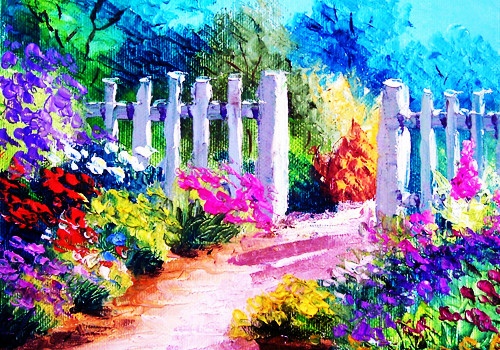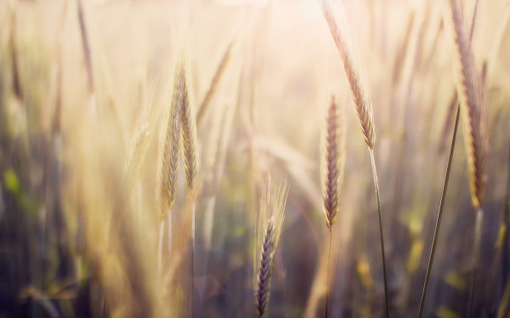
南岳衡山的导游词四百字
南 岳 衡 山尊敬的各位来宾:欢迎大家来南岳参观游览。
南岳衡山为我国五岳名山之一,主峰祝融峰在湖南省衡阳市南岳区境内,七十二峰,群峰逶迤,其势如飞。
素以“五岳独秀”、“祭祀灵山”、“宗教圣地”、“中华寿岳”、“文明奥区”著称于世。
现为首批国家重点风景名胜区、首批国家AAAAA级旅游景区、国家级自然保护区、全国文明风景旅游区和世界文化与自然双重遗产提名地。
“南岳”一词,始于春秋战国时期。
《周礼·虞书》云:“(舜)五月南巡狩,至于南岳。
”以南岳称谓衡山,最早见诸文字是汉初《尔雅》,其《释山》篇有“江南衡”之说,意指江南衡山,后《尚书·大传》中解《虞书》云:“南岳,衡山”。
但是据《周礼·职方氏》、《春秋》、《星经》等典籍介绍,对南岳衡山的来历另有一番解释。
它是按星宿的划分,说这地方上承轸宿玉衡星,所以叫衡山。
衡山因地处五岳的最南端,故名南岳。
1984年,衡阳市成立南岳区,管辖三乡一镇一个街道办事处,总人口5.96万,总面积181.5平方公里,其中中心景区100.7平方公里。
南岳衡山自然风光秀美,四时景色各异,春赏奇花,夏观云海,秋望日出,冬赏雪景。
祝融峰之高,藏经殿之秀.方广寺之深,水帘洞之奇,自古赞誉为南岳“四绝”。
南岳衡山无山不树、无处不绿,核心景区森林覆盖率高达91.58%。
境内有树木600多科、l700多种,其中有国家级保护植物90多种,如号称活化石的千年银杏、水杉;濒临绝种、世界罕见、衡山特有的绒毛皂荚;以及摇钱树、同根生、连理枝等等。
负氧离子浓度平均值高达26000个,立方厘米,是难得的“天然氧吧”。
与之相伴的有珍稀野生动物黄腹角雉、锦鸡、大头平胸龟、穿山甲等,可以称得上是一座天然的生物宝库
南岳衡山历史源远流长。
五岳自古就是江山社稷的象征,炎帝、祝融曾在此栖息,尧、舜、禹均登临祭拜,历代帝王或遣使或亲临祭祀。
自尧舜以来.南岳衡山作为五岳之一的历史已达四千余年。
黄帝、舜帝曾在衡山巡狩祭祀;大禹为治水,专程来南岳杀白马祭告天地.得“金简玉书”,立“治水丰碑”。
宋徽宗、康熙等皇帝为南岳题诗吟咏。
相传黄帝委任祝融氏主管南方事务并封他为管火的火正官即火神;祝融教民以火熟食,生活御寒,举火驱兽;制乐作歌,以谐神明,以和人声。
人们为了纪念这位管火有功的火正官,便以他的名字祝融命名南岳衡山的最高峰,并在峰顶建祠用于长年祭祀。
南岳是中国南方唯一一座最古老的人文始祖的祭祀山。
自舜帝南巡至隋唐至清,历史上有记载的朝廷遣使祭祀南岳的就有120次之多,民间祭祀就不计其数了。
《星经》载:南岳衡山对应星宿二十八宿之轸星,轸星主管人间苍生寿命.故名“寿岳”。
唐玄宗于南岳朱陵洞(水濂洞)投龙祈寿。
宋徽宗在南岳金简峰皇帝岩御题“寿岳”巨型石刻。
康熙皇帝亲撰的《重修南岳庙碑记》之中钦定衡岳为亿万臣民的“主寿之山”。
中华祝颂词“福如东海,寿比南山”之“南山”即南岳衡山。
《辞源》释“寿岳”即南岳衡山,南岳衡山因而被称誉为“中华寿岳”。
南岳衡山不仅是风景名山,也是宗教圣山。
这里道佛并存,互彰互显,同尊共荣。
既有佛道儒共存共荣的南岳大庙,佛教禅宗尊为“六朝古刹、七祖道场”的福严寺。
视为“天下法源”、“曹洞祖庭”的南台寺,又有道家立为《黄庭经》发源地的黄庭观等。
道教“三十六洞天、七十二福地”中,南岳独占四处。
求天柱山导游词一篇
各位游客: 欢迎大家来天柱山旅游观光!天柱山景区因为你们的到来而倍添光彩! 先让我来介绍下天柱山的大致概况吧!天柱山在长江北岸、安徽省潜山境内,因其高耸挺立,如巨柱擎天而得名。
天柱山过去还有潜山、皖山、万岁山称。
据说,称万岁山是因汉武帝南巡时,亲临皖山设台祭岳,敕封皖山为“南岳”,在祭岳时,人群高呼万岁,所以将此山称为万岁山。
隋唐以后,南岳改为衡山,天柱山被列为国内五大镇山之“中镇”。
唐代大诗人李白曾写了一着赞美天柱山风景奇秀的诗“江上望皖公山”,皖公山即天柱山,诗云:“奇峰山奇云,秀木含秀气。
清晏皖公山,绝称人意......” 车过旌驾桥,我们就进入了天柱山的南哨——三祖寺景区.三祖寺景区是天柱山人文景点最集中、文化品位最高的一个文化精品景区。
我们将在这里感受到天柱山神秘的宗教文化和帝王文化,观赏到具有历代书法艺术长廊之称的国家重点文保单位摩崖石刻群。
( 进入其南大门野人寨上行不远就到达三祖寺。
这是天柱山最著名的景点。
相传,寺始建于南朝,现仅存藏经楼、偏房数间和屹立于寺前的觉寂塔。
三祖寺西,有大石累累的山谷 ,谷侧陡岩直立,谷中流水潺潺,松竹遮天蔽日,称之为“山谷流泉”。
山谷门有一石洞,石洞前有一巨石状如卧牛,称“石牛古洞”。
相传,北宋人黄庭坚曾坐此石上读书,并自号“山谷道人”。
在这里的一块巨石上刻有黄庭坚的诗和同时代大画家李公麟所绘的黄庭坚坐于石牛上的画像。
这件珍贵的古代诗画刻石,现仍清晰可见。
) 话不多说,我们现在就出发吧 。
很快我们就到野人寨景区了
野寨是“野人寨”的简称。
这样依山傍水、风景如画的地方怎么取名“野人寨”呢
这里有两个动人的传说:一说是很早以前,这一带常有野人出没,伤害人畜。
当时的一位县令决心牺牲自己,解救民众。
他带上好酒好菜,深入野人洞中,陪野人喝酒,命人用生铁水将洞口凝住,和野人同归于尽。
其二,说是在南宋末年,本地土豪刘源率十万义兵在天柱山抗元。
他自号“刘野人”,在谷口扎的第一寨命名“野人寨”。
刘源抗元前后十八年,最后被内奸出卖壮烈牺牲。
后人为纪念他,野人寨的名字延用至今。
现在我给大家一个小时的休息时间,大家可以随意拍照,请大家一定要注意安全,那我们一个小时后见吧
一个小时的时间过的可真快啊,不知道大家玩的开心与否
好吧,现在我们继续我们的游程吧
。
我们现在来到了三祖寺前的广场了。
抬眼望去,红墙黛瓦的寺院建筑,被绿树翠竹包围着。
整个山形宛如一只振翅欲飞的彩凤,觉寂塔就建在凤冠上,东西两侧逶迤的山岗呈环围合抱之势,恰如凤翼护卫着庄严佛地。
常言道:“远看山包寺,近看寺包山。
” 三祖寺,全称“三祖山谷乾元禅寺”,是中国禅宗三祖传经布法的场所,在中国佛教发展史上占有十分重要的地位。
1983年,国务院批准公布为全国汉族地区重点开放寺庙。
三祖寺的建筑群,沿着凤形山的山势自下而上依次架造。
从山门一直通向祖师殿,全都处在一道中轴线上。
烧香礼佛,应从山门进入。
三祖寺的山门,也叫三门殿。
正门名“般若门”,即“智慧之门”;东边门名“解脱门”,意为摆脱烦恼业障的束缚而获得自由,也称“自由之门”;西边门名“精进门”,意指在去染滤净的修行过程中,要不懈地努力,也称“勤修之门”。
门楣上,悬挂着全国佛教协会会长赵朴初题写的“乾元禅寺”匾额。
进了山门,大家看到殿堂两边,站立着5.5米高的“金刚力士”各一尊。
佛教汉化后,这两尊像按《封神榜》中的“哼”、“哈”二将的形象来塑造的。
穿过山门殿,步上“通天阶”。
三祖寺因山势陡峭,一路上去,有360级台阶。
大家不妨从现在开始数一数,“通天阶”高差15米。
我需要一份关于解说“归元寺”的导游词
中英文如下: 归元寺英文导游词 Guiyuan Temple Chinese Buddhist temples are never single buildings. They always consist of a group buildings following a fundamental patter, which can, however, be modified. The main buildings and their symmetrically corresponding secondary buildings form individual groups and courtyards. The entire temple complex is spacious. The building inside the complex are usually single-storied and the main halls are sometimes decorated with a double roof. The towers, pavilions and halls can be multi-storied structures. The Chinese temple complex has been subject to great structural changes throughout the centuries. But temple architects follow the basic principles of secular structures from the Tang Dynasty onwards. The complexes stand on a central axis, usually a north-south axis: east-west only as an exception. (Guiyuan Temple is just the very exception.) The main buildings are strung along this central axis, their broadest sides facing south or east. The most important and most frequently presented building inside a Buddhist temple complex are the main entrance gate, the bell and drum towers, the Hall of the Heavenly Kings, the Hall of the Buddha and a pagoda. Buddhism is said to be founded in India in the 6th century BC by Siddatha Gautama (BC565 –BC486), the son of a nobleman and member of the Kshatriya caste near the present borders of India and Nepal. Buddhism advocates that all the people are created equal and turns against the caste system of Brahmanism, so it was popular with the common people. It was said that Buddhism was spread to China in 2 BC. At the beginning, it was only regarded as a kind of witch. About 200 AD, Chinese version of Buddhist s criptures began to appear, and thus, Buddhist doctrines began to emerge with traditional Chinese religious thought. From 2nd century to late 6th century, translation and research of Buddhist sects with Chinese characteristics were becoming more and more popular and many temples were built, which reached its peak in Sui Dynasty (581AD-617AD) and Tang Dynasty (618-907). Some Buddhist sects with Chinese characteristics came into being. Buddhism exerts a great influence on Chinese philosophy, literature, art and folk customs. What is presented before our eyes is a copper statue of a famous bodhisattva in Hynayana Buddhism. Bodhisattva is a tittle which is only next to Buddha. This statue is the image of Avalokitesvara, which has been popular with Chinese people or more than 1,000 years. She is called the Goddess of Mercy cordially by Chinese and is regarded as the symbol of kindness, mercy and benevolence. When we visit the Avalokitesvara Pavilion after a while, I will give a detailed introduction about her. This copper statue was sent to Guiyuan Temple by Taiwan Buddhists in September 1990. It shows that all Chinese, whether in the mainland or in Taiwan, are eager for the reunion of the country, even including religion believers. The building we see now is the Buddha Hall where one certain Buddha and his two assistant bodhisattvases are worshiped. This Buddha is Amitabha Buddha. Amitabha means incomparable brightness. According to Buddhism, time and space is limitless and thus there are many many Buddhas in different spaces and times. But in a certain space or in a certain period of time, there is only one certain Buddha who is in charge of instructing all living creatures. Amitabha Buddha is the Buddha who presides over the Land of Ultimate Bliss in the west, which will come in the future. Buddhist s criptures describe the Land of Ultimate Bliss as a wonderland, in which no pain exists and the people enjoy their lives. In one word, it’s very attractive. Some people will think it must be very difficult to enter such a world. How can I go to such a paradise? Maybe I have to work hard and bear a lot of sufferings. In fact, it’s very easy to enter the world. He only need often murmur ‘May Buddha preserve us’ sincerely. It’s enough. You see, the statue in the middle is the very Buddha. On his left is the Goddess of Mercy. On his right is the other bodhisattva who follows the Buddha. It is said that he can save all the living creatures from three kinds of terrible disasters. Now, let’s step into the Buddhist s criptures Pavilion where the s criptures of Buddhism are kept. But I ‘m afraid what attracts our attention at the first sight must be this snow-white statue. It is a statue of Sakyamuni, the founder of Buddhism. This statue was carved out of a big piece of jade which is 2-meter-tall and weighs 3 tons. It was carved by Myanmar handicraftsmen and donated to the temple by the Rangoon Buddhists in 1935. If we watch the statue, we may sense that the peaceful expression on the Buddha’s face has brought us to a quiet and harmonious state. The last building we will visit is the Avalokitesvara Pavilion in the north yard. When we entered the yard just now we saw a statue of her. Now I’d like to introduce her carefully. As a goddess, she swore that she would not become a Buddha until all the living creatures suffering from pains were saved. So she became a bodhisattva who is most popular among the people and attracts the most believers of all the gods and goddesses in Buddhism. It was said that one would be saved from trouble and disaster as long as he (she) chanted her name and if it was heard by her. Thus she is called Guanshiyin, which means ‘hearing or looking on the voices of the suffering’. Because of her kind heart and benevolence she got another title ‘the Goddess of Mercy’. According to Buddhism, bodhisattvases have no distinction of sex, that is, they are neither male nor female, because they are immortals. But it’s very strange and interesting that most of bodhisattvases were engraved or carved in the images of various kinds of men in human society. Changes didn’t take place until an emperor’s mother thought it was inconvenient to worship a male bodhisattva in her bedroom. From then on, Guanshiyin, the bodhisattvas began to appear before her believers in the image of a beautiful and elegant lady. We’ll pay a visit to a very serious, sacred place. Generally, the place is regarded as the most holy by Buddhists. It is the Grand Hall, where the founder of Buddhism, Sakyamuni is worshiped. It is always the center of a Buddhist temple in construction and in Buddhists’ mind. The statue in the middle is Sakyamuni. According to Buddhism his mother gave birth to him in a garden. He belonged to Kshatreya Caste. He married his cousin when he was 16 or 17 years old. At the age of 29, he was confronted with the sights of an old man, a sick man, a corpse, and a wandering ascetic. With eyes opened to aspects of life newly revealed to him, he broke from the material world and became an ascetic. Six years later, he gave up mystic concentration that at last brought him enlightenment under a bo tree. He then founded an order of mendicants and spent his next 45 years preaching his ideas until his death. These two statue beside the Buddha are his two disciples. The one on the right was said to be Sakyamuni’s cousin and he had good memory so that he could remember all the Buddha told his disciples. The one on the left was said to be the lord of Brahmnism and he once was Sakyamuni’s tutor. But afterwards he was convinced by Buddhism after long-term debate between Buddhism and other religions and he accepted Sakyamuni as his tutor. Thus he became the eldest one of all Sakyamuni’s disciples. Next, we’ll pay a visit to the Ahrat Hall in the south court. The Ahrat Hall is an important structure in a Buddhist temple. But not all temples have an Ahrat Hall, especially, well-kept Ahrat Halls are very rare in China. This one is among them, and what’s more, it has its own unique characteristics. Generally, an Ahrat Hall is a square building. The building is subdivided into four small square courts so that the hall can get enough sunlight. This kind of structure show some lucky implies in Chinese Buddhist culture. Another characteristic about the hall lies in these sculptures themselves. They were neither made up of wood, nor stone, nor clay. A special way was taken in making them, which could prevents them from being burned, being soaked or being eaten by insects. All the sculptures were floating in water while Wuhan was flooded in 1954, but, surprisingly, they were sound and safe after the flood had receded. It was really a wonder. Ahrats are the immortals in Buddhism. But when you have a look around the sculptures, you may find from the expressions on their faces that they are so familiar to you. That’s only because they were molded on the basis of the people in the reality, so they are human beings in our daily life rather than immortals. Ahrats are the symbols of harmony, happiness, and good luck, so the Wuhan natives have got used to counting ahrats since ancient time to pray for peace. There are a few ways of counting ahrats. We can count from the first ahrat from left to right or from right to left, when we just enter the hall. We can also choose any ahrat as our starting point, and count in the same way, left to right or right to left. We should base counting on our own ages whatever we take. For example, I’m 25, so I should stop in front of the 25th ahrat from the starting ahrat. The sculpture in front of which I stop is my lucky ahrat. My lucky ahrat will accompany me to spend a peaceful and lucky year. Wouldn’t you like to have a try now? If you need, I can explain connotation of some ahrats. That’s all for the explanation to Guiyuan Temple. Thank you for your cooperation and understanding. You will have another 30 minutes to have a look around the temple. If you have any problems, do let me know. I would like to repeat our bus number, A3074. Please don’t forget. See you later. 各位游客朋友们: 我代表我们××旅行社欢迎大家的到来。
我姓张,大家就叫我小张好了
就好像人们常说的那样,相逢就是缘分。
能和大家相逢在美丽的江城武汉并和大家一起度过这段美好的时光,我感到非常荣幸。
这位是我们的司机倪师傅,驾驶经验非常丰富,所以各位在旅游途中可以放心地欣赏窗外武汉的美景。
今天就由我们两个为大家服务,大家有什么问题可以尽管提出来,我们将尽力为您解决。
希望能用我们的热心、耐心和细心换来你的放心、开心。
归元寺 归元寺位于武汉市内,是清顺治十五年(1658)浙江僧人白光、主峰来此创建的。
1983年被国务院确定为汉地全国重点佛教寺院。
现为湖北省佛教协会和武汉市佛教协会的所在地。
这里古树参天,花木繁茂,泉清水绿,曲径通幽,是“汉西一境”。
归元寺由北院、中院和南院三个各具特色的庭院组成,拥有藏经阁、大雄宝殿、罗汉堂三组主要建筑,占地面积17500多平方米。
北院的主要建筑是藏经楼,是一座两侧五开间的楼阁式建筑,高约25米,顶为大脊,鱼角搬爪,飞栱飞檐,古朴玲珑;当面为四柱通天,双凤朝阳,五龙戏珠。
整个建筑精巧壮观,金碧辉煌。
这里藏有许多佛教文物,除藏经外,还有佛像、法物、石雕、书画碑帖及外文典籍,是国内收藏佛像较多的一个佛寺。
1935年太虚法师出访缅甸时,仰光的佛教徒赠他一尊1吨多重的玉石雕成的释迦牟尼佛像,就供奉在这里。
这种佛像在我国只有三尊,其他二尊分别列供于北京和上海。
藏经阁里收藏的佛经有:清代《龙藏》一部,宋代影印本《碛砂藏》一部,清末民初上海印《频伽藏》一部。
另外还有两件珍品:一是清光绪元年(1875),湖南衡山69岁老人李舜千书写的“佛”字。
“佛”字是在长宽不超过6寸的纸上,由《金刚经》和《心经》原文共5424个字组成。
每个字只有芝麻大,肉眼分辨不清。
用30倍放大镜看,笔力挺秀,是书法珍品。
另一件是武昌僧人妙荣和尚刺血调和金粉抄成的《华严经》和《法华经》,字体娟秀,堪称精品。
中院的主体建筑是大雄宝殿。
该殿初建于清顺治十八年(1661),后经多次维修。
现大雄宝殿是清光绪三十四年(1908)重修。
大殿正中供奉着释迦牟尼坐像,两侧为其弟子阿难和迦叶像。
释迦偏袒左肩,结跏趺坐,庄严静穆。
佛像后背是用樟木雕刻而成的“五龙捧圣”的图案。
佛像前还有韦驮、弥勒、地藏像。
佛像后是一组海岛观音像。
只见海岛观音赤足站立,左右侍立着一龙女和童子,背后是一面高达八尺的泥塑悬崖峭壁,足下碧波万顷,怒涛汹涌。
整个塑像向前倾覆。
人们仰视上去,只见观音衣袖似在飘动,正在汹涌的波涛上迎面向你走来,增加了宗教艺术的感染力。
佛像前的供桌,是一件不可多得的木刻珍品。
供桌高4丈8尺,横阔1丈2尺,深宽2.5尺,前嵌垂栏,宽1.5尺,高0.6尺,其间分为五格,深画镂空。
图案描绘的是唐玄奘取经回长安时,君民夹道欢迎的场面:有唐僧、孙悟空、猪八戒、沙和尚等《西游记》人物,有李世民以下文武百官、侍卫、庶民百姓;有亭院殿墙,车马山水,幢幡宝盖,香炉蜡台等一应俱全。
综观全图,繁复活泼,盛况空前。
垂栏下沿为五龙云彩,周围匝绕,以四虎腿支地,生动有力。
相传这一樟木雕刻由十人历时一年才完成。
大雄宝殿前的韦驮殿内,供奉着一尊木雕韦驮像,身着铠甲,手持宝杵,威武挺立,用我国古代武将形象表达了古印度神话中“四大天王三十二将”之首的护法神形象。
这座木雕系用整块樟木雕成,线条刀法都是唐朝风格,是归元寺的艺术珍品,也是我国雕刻艺术品中的一件宝贵遗产。
归元寺属曹洞宗,又称归元禅寺,它与宝通寺、溪莲寺、正觉寺今称为武汉的四大丛林。
希望大家旅途愉快,谢谢。
安徽的名胜古迹
风景名胜 市名 主要景点 合肥 包公园、包公祠、徽园、明教寺、逍遥津、渡江战役前委遗址、龙城遗址、紫蓬山、三河古镇 芜湖 方特欢乐世界、镜湖、渡江纪念塔、黄盖墓、神仙洞 蚌埠 禹王庙、汤和墓、涂山白乳泉、龙子湖 淮南 八公山、上窑山、舜耕山、古寿州窑遗址、淝水之战遗址、焦岗湖、茅仙洞、大通万人坑 马鞍山 采石矶、太白楼、太白墓、雨山湖公园、朱然幕 淮北 相山风景区、隋唐大运河博物馆、黄里风景区,化家湖,龙脊山风景区,乾隆湖风景区,淮海战役总前委遗址。
铜陵 天井湖、西山、相思树、滴水崖、金牛洞古采矿遗址、大明寺 灵窦泉、太阳岛 安庆 天柱山、迎江寺、浮山、妙道山、花亭湖、石莲洞、大龙山 黄山 黄山、太平湖、齐云山、西递、宏村、南屏、关麓、翡翠谷、唐模、呈坎、棠樾牌坊群、新安江山水画廊、花山谜窟-渐江、牯牛降、清凉峰、徽州古城、屯溪老街 阜阳 八里河、管鲍祠、颍州西湖、阜阳生态园、文峰塔、文庙、迪沟生态乐园、竹音寺、刘琦祠 宿州 皇藏峪、虞姬墓、垓下古战场遗址、大泽乡涉故台、天门寺、燕喜台 滁州 琅琊山、皇甫山、醉翁亭、神山、皖东烈士陵园、中国人民抗日军政大学第八分校旧址、白鹭岛、韭山、明皇陵、明中都城遗址、吴敬梓纪念馆、碧云湖 六安 寿县古城墙、万佛山、天堂寨、南岳庙、西古城遗址、千佛庵、红四方面军总指挥部旧址、大别山 宣城 敬亭山、太极洞、恩龙世界木屋村、江村古民居、皖南事变遗址、新四军军部旧址、龙泉洞、龙川胡氏宗祠 巢湖 巢湖、鸡笼山、太湖山、褒禅山、陋室、天井山、周瑜墓、米公祠、仙人洞、姥山、霸王祠、金孔雀温泉旅游度假村 池州 齐山秋浦仙境、九华山、升金湖、东流古街、石台溶洞群、大王洞 亳州 花戏楼、华佗庵、曹操家族墓群、曹操公园、古井酒文化博物馆、曹操地下运兵道、汤陵公园、中国中药材交易中心、白鹭洲风景区、天静宫、石佛寺、庄周故里
求2011年报考了湖南导游证的同学透露点今年题目的消息、面试笔试的都可以。
我是张家界的,11月13号考。
亲爱的朋友们:快乐的时光总是稍纵即逝,很快的,大家的嵩山之旅就要告一段落了。
。
。
很高兴和大家一起度过这段美好而又短暂的时光
希望下次还有机会和你们共叙
谢谢大家。
。
。



